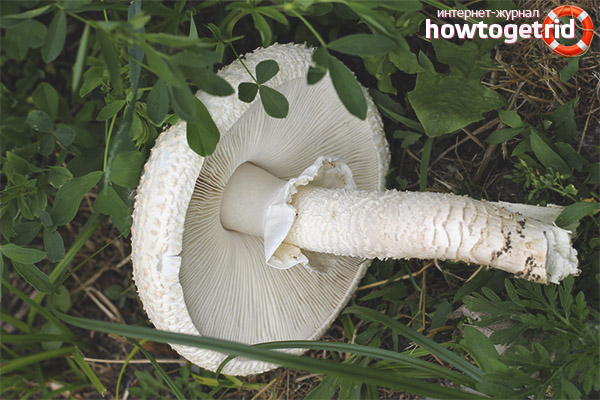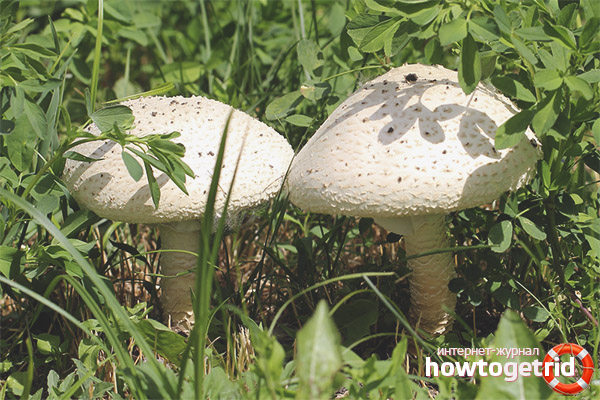The content of the article
Mushroom Amanita Wittadini belongs to the Amanita family. As to whether they can be eaten, debate is still ongoing. Some sources say that they are poisonous. Others argue that the mushroom is completely edible, and does not pose any health hazard. Most likely, in this case, it will be appropriate to consider representatives of this species as conditionally edible mushrooms.
In Latin, its name sounds like Amanita vittadini.
Appearance
The cap in mushrooms of the species Amanita Wittadini is usually white. But sometimes there are specimens in which it is painted in a brown or greenish color.
The diameter may be different. It ranges from 5 to 14 cm. The remains of the bedspread with scaly spikes are present on the hat. The base is angular, they are noticeably convex. At the periphery, these residues are separated from the skin of the fungus.
The plates that are located under the hat are also white. Spores have a smooth surface, amyloid. The shape of the spores is irregular in the form of an ellipse. A spore powder also has a white color.
The leg of these mushrooms has the shape of a cylinder. It is also white, but slightly tapers towards the base and becomes darker. There is a smooth ring on the leg. Young mushrooms are enclosed in a common Volvo. In adult fungi, it disappears over time. From it there are only traces that are represented by scales located on the hat and on the leg of the mushroom.
Where grows
They also grow in other European countries, which are characterized by a warm climate. You can meet them almost throughout the territory, starting from Italy and ending with the British Isles. There are representatives of this species in Asian countries. They grow in the Far East. You can meet this fly agaric both in Israel and in Transcaucasia. There is this mushroom also on other continents. It is found in Africa as well as in America.
Favorite places for the growth of mushrooms of this species are steppes and forest-steppes, located near the forest belt. On the territory of southern Europe, this fly agaric can be found very rarely. Perhaps that is why residents are wary of him, and believe that he is poisonous. The fruiting period of Amanita Wittadini is rather long. You can collect them from mid-spring to mid-autumn. They grow on different types of soil.
Similarity with other species
Externally, representatives of this species are quite similar to a white fly agaric. And this mushroom is very poisonous. Its use can be fatal. This may be another reason many people avoid the fly agaric Wittadini. They are simply afraid to confuse him.
In appearance, it is very similar to an umbrella painted white. There is no danger in such a similarity.
The nutritional value

Young mushrooms of this species can be eaten. The pulp has good taste and a pleasant aroma. But it is very rare in nature, so many prefer not to collect them. After all, there is a high probability of confusing it with a deadly look.
Classification
Mycologists attribute this species to the genus Lepidella. But many of them believe that representatives of this species have both features of fungi belonging to the genus Amanita, and features of Lepiot.
Features
It is noteworthy that these mushrooms do not lose their viability when the body dries (in case if not young). Therefore, they may temporarily stop growing due to drought, but when the rains are blown out, the mushroom will come back to life, and will continue to grow.
Related mushrooms
Another related species, which is also conditionally edible, is the fly agaric of Elias. The hat first has an ovoid shape, and then becomes flatter with a tubercle in the middle. It can be painted white, beige, and sometimes pinkish. Brown specimens are also found. There are remains of a bedspread on it. There is a ring on the leg.
A view is growing in the Mediterranean. In Russia, you can meet extremely rarely. You can see in the forest under a nut, beech, etc.










Submit